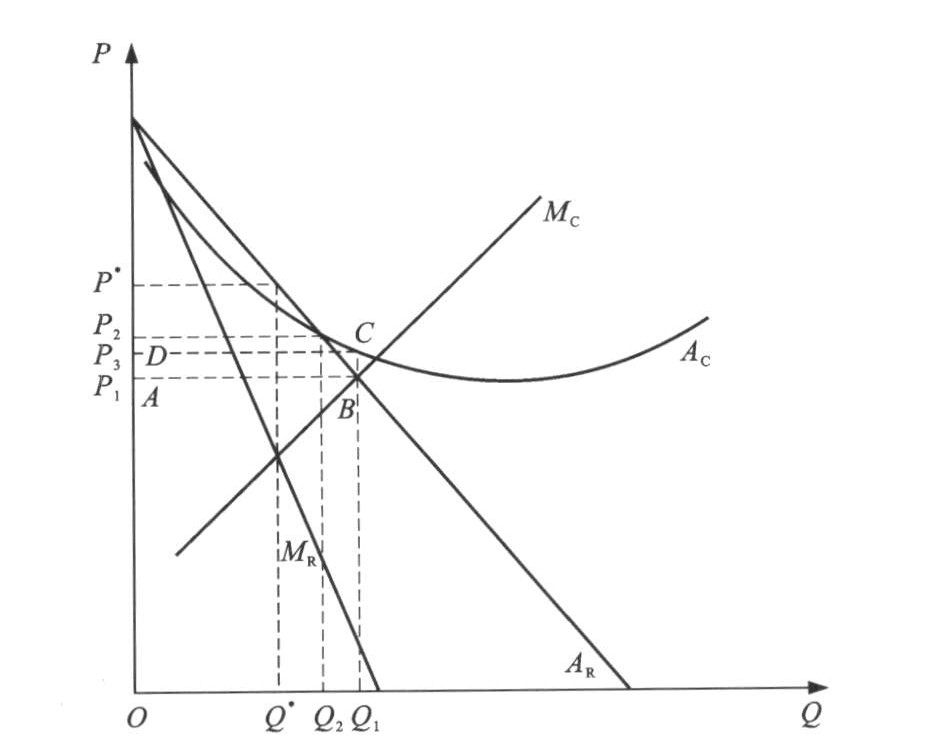Public transit pricing and optimal government compensation models
-
摘要: 为了完善公共交通定价与政府补偿机制, 分析了规模报酬递增、正外部性和次优理论3个潜在经济机理, 建立了3个定价与补偿优化模型, 并以西安公交为例进行了公共交通定价与补偿模型的应用。分析结果表明: 基于规模报酬递增的边际成本定价与补偿模型, 社会福利最佳且最为实用; 基于正外部性的供求平衡定价与补偿模型, 企业福利最佳; 基于次优理论的Ramsey定价与补偿模型, 在原理诠释方面最佳; 补偿模型测算2009年西安公交的政府补偿金额为9.78亿元, 符合现实需求, 模型有效。Abstract: In order to improve public transit pricing and government compensation mechanism, three potential economic principles such as increasing returns to scale, positive externalities and second-best theory were elaborated. Three models for pricing and calculating optimal compensation were established. The application of public transit pricing and compensation models was studied with Xi'an as an example. Analysis result indicates that the pricing and compensation model of marginal cost based on increasing returns to scale is identified as best social welfare and being the most practical, another model of supply-demand balance based on positive externalities can get optimum corporate welfare, and the model of Ramsey pricing and compensation based on second-best theory is better for explaining principles. The government compensation amount of Xi'an in 2009 is calculated at 978 million yuan, the outcome basically agrees with the actual demand, and the models are effective.
-
表 1 公共交通定价与补偿模型评价
Table 1. Evaluation on models of public transit pricing and compensation
模型 边际成本定价 供求平衡定价 Ramsey定价 优势 能够反映将来需求增加所引起的成本变动; 能够反映公交服务的真实成本价格, 有利于资源优化配置, 实现社会福利剩余最大化 对公交企业的正外部性给予补偿, 从整个社会来看可获得净收益; 经济补偿表面上属于政府财政支出, 但实际是一种支付转移 充分考虑公交服务边际成本与需求价格弹性; 保证公交企业财务收支平衡; 在收支平衡前提下, 实现社会总福利最大化; 有利于促进公交市场有效竞争 劣势 边际成本的预测和估计影响了结果的准确性; 追求静态效率的短期边际成本定价将导致投资的不足; 政府财务负担沉重, 对经济造成扭曲; 公交服务质量与收益脱钩, 易引发行业无效率 外部效益种类繁多, 获得者广泛, 难以准确计量; 交易成本高昂, 补偿成本有可能超过补偿收益, 导致补偿失效; 作为一种间接补助方式, 它只补偿一部分社会公众 社会福利分配可能存在不公平; 需要大量历史数据与信息, 操作复杂; 理论性强, 适用性存在诸多局限 评价 社会福利最佳 企业福利最佳 原理诠释最佳 表 2 出行者补偿价格预测
Table 2. Compensation price forecasting of travelers
类别 收入均值/元 可接受月交通支出/元 补偿价格/元 学生 300 18.3 1.171 低保人群 300 18.3 1.171 老年人 1.347 IC卡持有者 1 338 81.6 0.562 无IC卡出行者 表 3 2009年公交出行者构成
Table 3. Structure of public transit travelers in 2009
类别 学生 低保人群 老年人 IC卡持有者 比例/% 14.0 3.2 6.2 76.6 预测客运量/万人次 19 145 4 376 8 478 104 747 -
[1] OSULA D O A. Aprocedure for esti matingtransit subsidization requirements for developing countries[J]. Transportation Research Part A: Policy and Practice, 1998, 32 (8): 599-606. doi: 10.1016/S0965-8564(98)00015-9 [2] FEARNLEY N, BEKKEN J T, NORHEI M B. Optimal performance-based subsidies in Norwegian intercity rail transport[J]. International Journal of Transport Management, 2004, 2 (1): 29-38. doi: 10.1016/j.ijtm.2004.04.003 [3] DODGSONJ S. Benefits of changesin urban public transport subsidies in the major Australian cities[J]. Economic Record, 2007, 62 (2): 224-235. [4] VAN REEVEN P. Subsidisation of urban public transport and the Mohring effect[J]. Journal of Transport Economics and Policy, 2008, 42 (2): 349-359. [5] 黄海军, BELL M G H, 杨海. 公共与个体竞争交通系统的定价研究[J]. 管理科学学报, 1998, 1 (2): 17-23. https://www.cnki.com.cn/Article/CJFDTOTAL-JCYJ199802003.htmHUANG Hai-jun, BELL M G H, YANG Hai. Pricing and modal split in a competitive systemof mass transit and highway[J]. Journal of Management Sciences in China, 1998, 1 (2): 17-23. (in Chinese) https://www.cnki.com.cn/Article/CJFDTOTAL-JCYJ199802003.htm [6] 王殿海, 吴娟, 栗红强. 典型线路公共汽车票价确定方法研究[J]. 公路交通科技, 2000, 17 (6): 80-82. doi: 10.3969/j.issn.1002-0268.2000.06.022WANG Dian-hai, WUJuan, LI Hong-qiang. Study on method of deciding bus ticket price for typical route[J]. Journal of Highway and Transportation Research and Development, 2000, 17 (6): 80-82. (in Chinese) doi: 10.3969/j.issn.1002-0268.2000.06.022 [7] 仝允桓. 城市快速交通线项目的最优票价与政府补偿[J]. 系统工程理论与实践, 2001, 21 (4): 88-91. doi: 10.3321/j.issn:1000-6788.2001.04.018TONG Yun-huan. Opti mal fare-pricingfor urban rapid-transport line project and government compensation[J]. Systems Engineering-Theory and Practice, 2001, 21 (4): 88-91. (in Chinese) doi: 10.3321/j.issn:1000-6788.2001.04.018 [8] 王健, 安实, 徐亚国. 道路拥挤定价下的公交收费模型研究[J]. 中国公路学报, 2005, 18 (4): 100-103. https://www.cnki.com.cn/Article/CJFDTOTAL-ZGGL200504020.htmWANGJian, AN Shi, XU Ya-guo. Study of bus toll model under urban road congestion pricing[J]. China Journal of Highway and Transport, 2005, 18 (4): 100-103. (in Chinese) https://www.cnki.com.cn/Article/CJFDTOTAL-ZGGL200504020.htm [9] 王镜, 邵春福, 毛科俊. 公交换乘优惠的双层规划模型[J]. 中国公路学报, 2008, 21 (2): 93-97. https://www.cnki.com.cn/Article/CJFDTOTAL-ZGGL200802017.htmWANG Jing, SHAO Chun-fu, MAO Ke-jun. Bi-level programming model for transfer benefit of public transportation[J]. China Journal of Highway and Transport, 2008, 21 (2): 93-97. (in Chinese) https://www.cnki.com.cn/Article/CJFDTOTAL-ZGGL200802017.htm [10] 陈宽民, 王建军, 殷建军. 西安市公共交通现状分析及战略规划[J]. 长安大学学报: 自然科学版, 2002, 22 (6): 69-74. https://www.cnki.com.cn/Article/CJFDTOTAL-XAGL200206018.htmCHEN Kuan-min, WANG Jian-jun, YI NJian-jun. Strategic plan and current situation analysis of public transit in Xi'an City[J]. Journal of Chang an University: Natural Science Edition, 2002, 22 (6): 69-74. (in Chinese) https://www.cnki.com.cn/Article/CJFDTOTAL-XAGL200206018.htm -





 下载:
下载:




